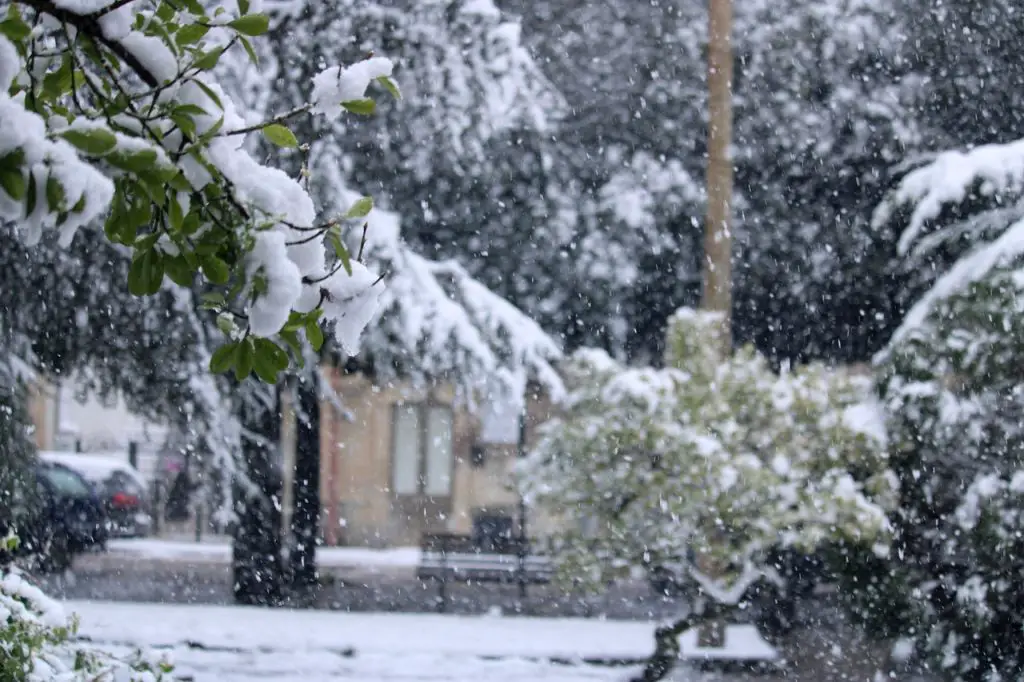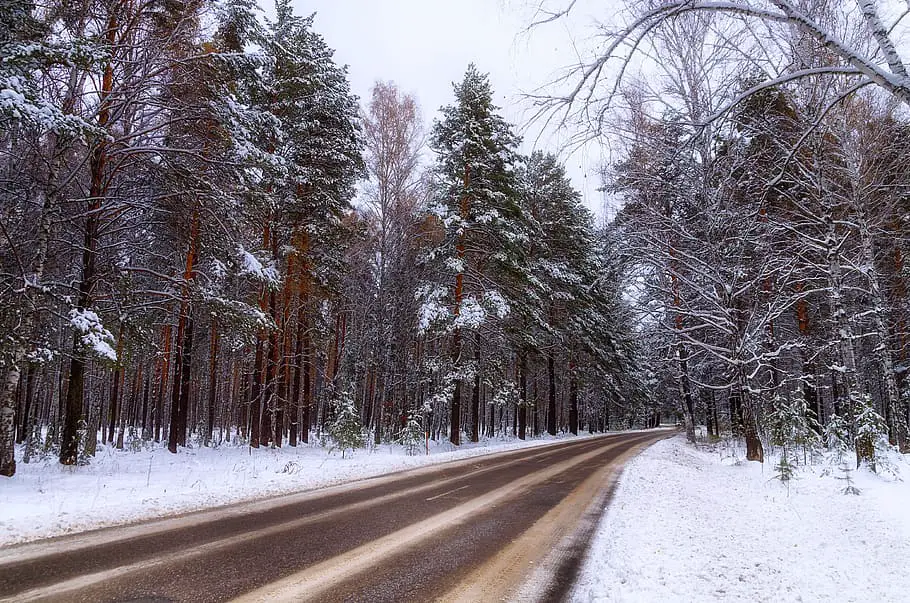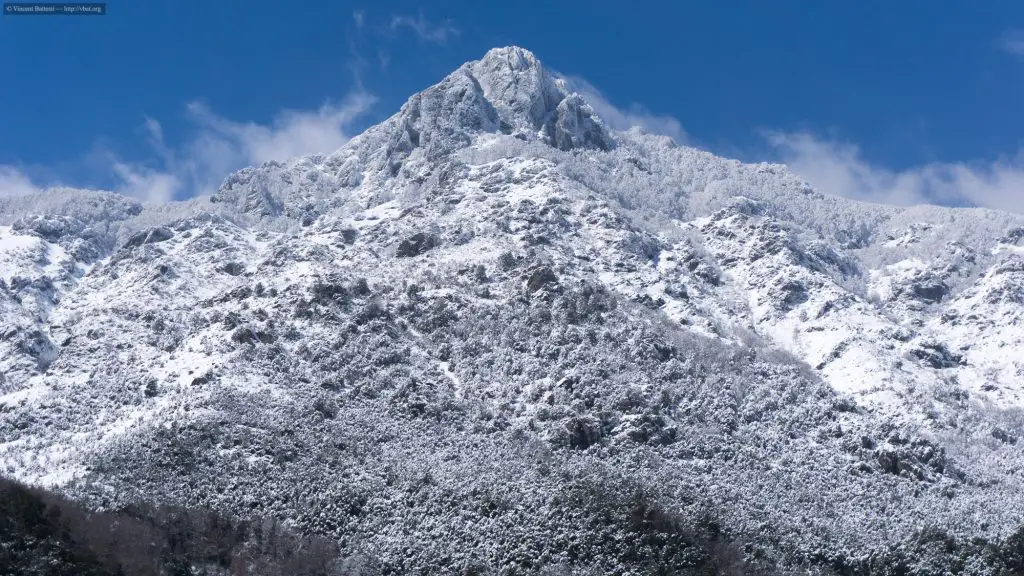When you hear “Arizona,” the image that likely comes to mind is of scorching deserts and towering cacti, not a landscape covered with a blanket of fresh, white snow. However, Arizona is much more than just a desert. When it comes to the question, “Does Prescott AZ get snow?” the answer is a resounding yes.

This might come as a surprise to many, but the high-elevation city of Prescott, Arizona, experiences a full range of four seasons, including a snowy winter.
A Brief Overview of Prescott, Arizona
Prescott, often referred to as “Everybody’s Hometown,” is a city in central Arizona known for its old-world charm and rich historical roots. Nestled in the Bradshaw Mountains of Central Arizona, Prescott enjoys an altitude of 5,368 feet, which substantially influences its climate.
The city is surrounded by the Prescott National Forest, which boasts of a beautiful variety of fauna and flora. This location allows Prescott to experience all four seasons, including a winter that often includes snowfall, which sets it apart from many other regions in Arizona.
Myths and Realities about Arizona’s Climate
Arizona is often portrayed as a perpetually hot desert with little variation in its climate. However, this couldn’t be further from the truth. Arizona’s diverse geography, ranging from low-lying desert areas to high mountain regions, results in a myriad of microclimates.
Prescott, for instance, due to its high elevation, experiences cooler weather compared to the lower desert areas like Phoenix and Tucson. During winter, it’s not uncommon for Prescott to be blanketed in a layer of snow, providing a stark contrast to the arid desert image often associated with Arizona.
Geographic Location and Its Influence on Weather
Prescott’s geography plays a crucial role in its climate. Located in the central highlands of Arizona, it enjoys a cooler and wetter climate compared to the southern parts of the state.
According to the Köppen Climate Classification system, Prescott has a Mediterranean climate, which is characterized by hot summers and mild to cool winters with regular precipitation, including snowfall.
The city’s elevation also significantly impacts its weather. The higher altitude means that air temperatures decrease, allowing for colder winters that can sustain snow. This is in stark contrast to the lower-elevation desert areas of the state, which rarely, if ever, see snowfall.
Understanding Prescott’s Four Season Climate
Prescott’s four-season climate is one of its most charming aspects. Springtime sees a mix of mild temperatures and occasional rain showers, while summers, although warm, are not as scorching as in other parts of Arizona due to the city’s high elevation.
When fall arrives, Prescott’s forests come alive with an array of colors. But it’s the winter season that tends to surprise many. As temperatures dip, Prescott is often graced with snow, turning the city into a picturesque winter wonderland.

Common Misconceptions About Arizona’s Climate
There are a lot of misconceptions when it comes to Arizona’s climate. For one, many believe that it’s hot year-round, which isn’t true. While areas like Phoenix and Tucson experience a desert climate with incredibly hot summers, northern and central parts of the state, including Prescott, have a more diverse climate.
Another misconception is that it doesn’t snow in Arizona. However, places like Flagstaff and Prescott regularly see snow in the winter months. In fact, according to the National Weather Service, Prescott averages 12.8 inches of snow per year.
Typical Winter Weather Patterns in Prescott
Prescott’s winter months are often filled with sunny days and crisp, chilly nights. However, snow is a frequent visitor during these months. When the conditions are just right, Prescott transforms from a vibrant, high-desert city into a serene, snowy wonderland.
Typically, the heaviest snowfall occurs during December and January, but it’s not unheard of for snow to appear as early as November or as late as March. The city often sees multiple snow events in a single winter season.
The Science Behind Why Prescott Gets Snow
The reason why Prescott gets snow while other parts of Arizona don’t can be attributed to its unique geography. Elevation plays a big part in this. As you ascend in altitude, the temperature drops. This temperature drop is significant enough in Prescott to allow precipitation to fall as snow during the winter months.
Another factor is the presence of moisture. During the winter, storms coming from the Pacific Ocean often pass through Arizona. The moisture from these storms combined with the cooler temperatures at higher elevations results in snowfall in places like Prescott.
Historical Snowfall Data in Prescott
Snowfall records from the National Weather Service reveal that Prescott has a long history of snowy winters. On average, Prescott receives about 12.8 inches of snow each year. However, this can vary significantly from year to year.
For example, during the 2018-2019 winter season, Prescott recorded an impressive 24.5 inches of snow in just one day, which was one of the most significant single-day snowfalls in the city’s history. This goes to show that while Prescott’s winters are usually mild, they can occasionally pack a punch.
Recent Trends: Have Winters Been Getting Snowier or Less Snowy?
Analyzing data from the National Weather Service, it appears that Prescott’s winters have been somewhat variable over the past few decades. Some years see above-average snowfall, while others are below average.
While it’s difficult to draw conclusions from such variability, what is clear is that snow continues to be a regular part of Prescott’s winter landscape.
Comparing Prescott’s Snowfall to Other Arizona Towns
While other parts of Arizona like Phoenix and Tucson rarely see snow, the northern and central regions of the state experience regular snowfall. Flagstaff, for example, is one of the snowiest cities in the U.S., receiving an average of 100.3 inches of snow per year.

On the other hand, Prescott, while less snowy than Flagstaff, receives significantly more snowfall than the lower desert areas of the state. This goes to show how diverse Arizona’s climate can be.
How Snow Impacts Everyday Life in Prescott
Snowfall in Prescott often brings everyday life to a slower pace. Schools might be closed or delayed, and residents are often found clearing their driveways or building snowmen. Despite the disruption, there’s a certain charm to a snow day in Prescott that residents have come to love.
Of course, snow can also create challenges. Road conditions can become hazardous, and black ice is a concern. However, the city’s infrastructure is well-equipped to handle such situations, and road-clearing operations often begin as soon as the snow starts to fall.
Effect of Snow on Local Flora and Fauna
The arrival of snow in Prescott brings about a transformation in the local flora and fauna. Many animals hibernate or migrate, while others adapt to the snowy conditions. Deer, for example, are often seen frolicking in the snow, while a variety of bird species take advantage of the feeders that locals put out.
As for the local flora, many of the region’s plants are adapted to survive the winter chill. Some trees, like the Ponderosa Pine, thrive in the snowy conditions, while others like the Gambel Oak, shed their leaves and conserve their energy for the spring.
Unique Winter Activities and Recreation in Prescott
Prescott’s snowy winters open up a world of outdoor recreational activities. From the thrill of sledding down snow-covered hills to the peaceful serenity of a winter hike, there’s something for everyone to enjoy.
Here are some popular winter activities in Prescott:
- Downtown Christmas Lights: Each winter, the downtown area of Prescott transforms into a twinkling wonderland of Christmas lights. Known as “Arizona’s Christmas City,” Prescott is famed for its stunning light display that adds a festive touch to the snowy landscape.
- Sledding and Snow Play: When snow covers the ground, locals and tourists flock to popular sledding spots like Fain Park, Heritage Park, and others. Building snowmen, making snow angels, and engaging in friendly snowball fights are also common activities enjoyed by both kids and adults alike.
- Winter Hiking: Hiking in the snow offers a unique experience. Trails like the Thumb Butte Loop or the Peavine Trail offer stunning winter views of the surrounding landscape.
- Snowshoeing and Cross-country Skiing: For the more adventurous, snowshoeing or cross-country skiing in areas like the Prescott National Forest can be an exhilarating experience.
Local Infrastructure: How Prescott Deals with Snow
While snow in Prescott can create some challenges, the city is well-prepared to handle them. The City’s Public Works Department has a fleet of snowplows that clear the roads as soon as the snow begins to fall. They work diligently around the clock to ensure that main roads, bridges, and public facilities are safe and accessible.
In addition, the city provides regular updates on road conditions and closures. Residents are also encouraged to prepare for winter by having necessary supplies on hand and winterizing their homes and vehicles.
Winter Driving Tips for Prescott’s Roads
Driving in snowy conditions can be challenging. However, with the right precautions, you can navigate Prescott’s roads safely during winter. Here are a few tips:
- Slow down: Speed limits are set for ideal conditions, which means driving at or below the posted speed limit during snowfall is often unsafe. Reducing your speed allows more time to react if you encounter slick roads or other hazards.
- Increase following distance: Allow extra space between your vehicle and the one in front of you to give yourself ample stopping time.
- Stay calm: If your vehicle begins to skid, remember to stay calm, take your foot off the accelerator, and steer in the direction you want to go.
- Prepare your vehicle: Before winter arrives, make sure your vehicle is winter-ready. Check your tires, battery, windshield wipers, and fluid levels.
Snow and Winter Safety Tips for Prescott Residents
Staying safe during winter requires some additional precautions. Here are some tips for Prescott residents:
- Dress warmly: Dress in layers and ensure that extremities like hands, feet, and ears are well-covered when venturing outside.
- Avoid overexertion: Shoveling snow or pushing a car can be strenuous and could lead to a heart attack or injury. Take frequent breaks and ask for help if needed.
- Prepare your home: Winterize your home by insulating walls and attics, caulking and weather-stripping doors and windows, and insulating water lines that run along exterior walls.
- Stay informed: Keep an eye on the weather forecast and road conditions, especially when planning to travel.
Predicting Future Winters: How Climate Change Could Affect Prescott’s Snowfall
Climate change is altering weather patterns around the world, and Prescott is no exception. According to the U.S. Climate Resilience Toolkit, the Southwest is expected to become hotter and drier due to climate change. This could potentially lead to milder winters and less snowfall in Prescott in the long run.
However, predicting specific local impacts is challenging due to the complex nature of climate systems. Scientists continue to study how climate change will affect different regions, and residents can do their part by staying informed and taking action to reduce their carbon footprint.
Climate Change Mitigation Efforts in Prescott
Prescott is taking steps to address climate change. The city has initiated several sustainability efforts, such as the use of renewable energy for city operations, increased recycling programs, and improving the city’s water efficiency.

Residents are also doing their part. From installing solar panels on homes to participating in local conservation efforts, the people of Prescott are actively engaged in making their city more sustainable.
Frequently Asked Questions:
In this section, we will be delving into some of the most common inquiries and curiosities that surround our topic.
When Does It Typically Snow in Prescott?
Prescott typically sees snowfall in the winter months, usually from December to March, with the heaviest snowfall occurring in December and January.
How Much Snow Does Prescott Get?
On average, Prescott receives about 12.8 inches of snow per year. However, the amount can vary significantly from year to year.
Does It Snow Every Year in Prescott?
While there are variations from year to year, Prescott typically sees at least some snowfall each winter.
How Do Residents Cope with the Snow?
Prescott residents are well-prepared for snow. The city’s Public Works Department promptly clears the roads, and residents are encouraged to prepare their homes and vehicles for winter. During snow days, many people enjoy outdoor activities such as sledding and snowball fights.
Conclusion
Prescott, Arizona, with its unique blend of mild, sunny weather and occasional winter snowfalls, provides a unique and beautiful environment for its residents. While the question, “Does Prescott, AZ get snow?” can be answered affirmatively, the reality is much more nuanced.
The snow, though not as persistent or deep as in some other parts of the country, brings a special charm to Prescott. It paints a picturesque scene, turning the city into a winter wonderland, perfect for the Christmas festivities and a variety of winter activities.
However, like many other cities, Prescott faces the challenges of climate change. While the city and its residents are taking steps to mitigate their carbon footprints and adapt to changes, the future of snow in Prescott remains uncertain.
As we move forward, enjoying the beauty of the present while keeping an eye on the future is vital. After all, snow or not, Prescott continues to offer a unique and enchanting living experience.
So whether you’re a resident of Prescott looking forward to the next snowfall, a visitor planning a winter vacation, or just curious about the weather patterns in this part of Arizona, we hope this article has helped to answer your questions and provide useful information.
Remember, no matter the weather, there’s always something special to enjoy in Prescott, AZ!



Leave a Comment
You must be logged in to post a comment.